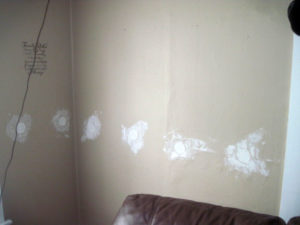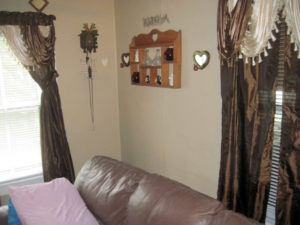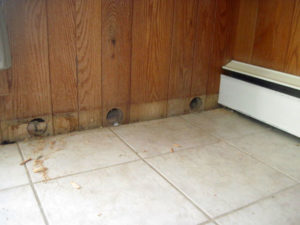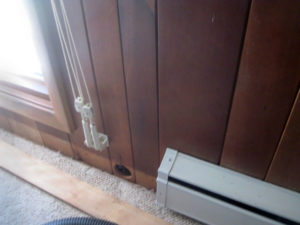Many houses with brick facades, stucco exteriors, or the long-lasting slate siding do not have insulation in the sidewalls. This results in cold walls, higher heating and cooling bills, and some mysterious drafts.
The reason is simple: Brick walls are nearly impossible to work with from the outside. Stucco often has tough metal mesh behind the material and the patching result is miserable. Slate siding has asbestos in the material and the State of Wisconsin regulations make working with such siding prohibitive and untenable.
Sidewall insulation is now challenging the long-assumed benefit that attic insulation is the best investment in our climate. Specifically, dense pack cellulose sidewall insulation reduces drafts and air leakage while insulating the walls. For example, what are thought to be drafty windows are often non-existent or inadequate insulation of the sidewalls around the window. Sidewall insulation often reduces such “window drafts” and definitely improves sound attenuation.
After sidewall insulation, one customer thought the roadway was closed off for construction because she could not hear the traffic!
In your brick, stucco, or slate-sided home, the sidewall insulation work has to be done from the inside in a one-room-at-a-time manner. What that means is that furniture just needs to move 3’ to 4’ back from the outside walls with some passage to the cleared area in each room. Your floors and belongings are covered with poly sheets. Holes must be drilled about every 16” and above windows and doors. The drill has all dust vacuumed into a shop vacuum or, as needed, a HEPA vacuum. Then the walls are insulated using the dense pack cellulose technique with great effort to keep the material and dust in the wall and not in your living area.
Finally the holes are plugged with foam plugs and the wall is patched with quick drying catalytic drywall compound. After several coats with a quality primer, the wall can be touched up with the finish color.
Overall, it is a short-term mess for a great long-term benefit!
In Wisconsin, Focus on Energy has incentives of $850 to $2,250 depending on how much energy you are predicted to save based on a software analysis.
Don’t let your comfort wait any longer, contact us today!




